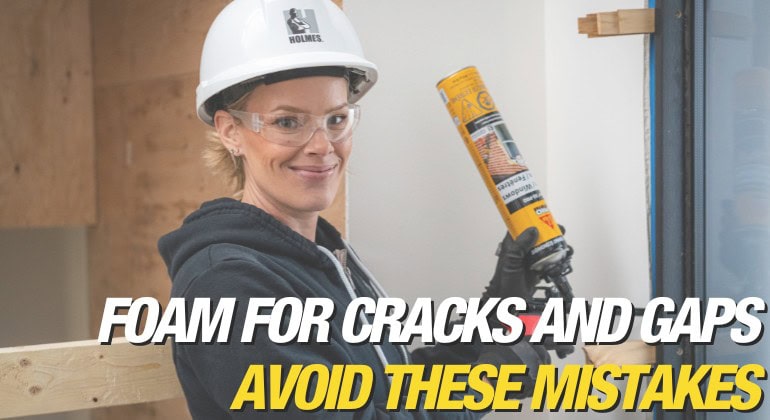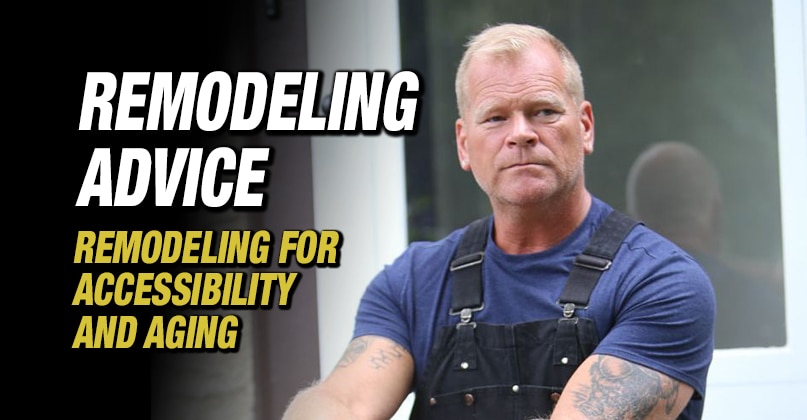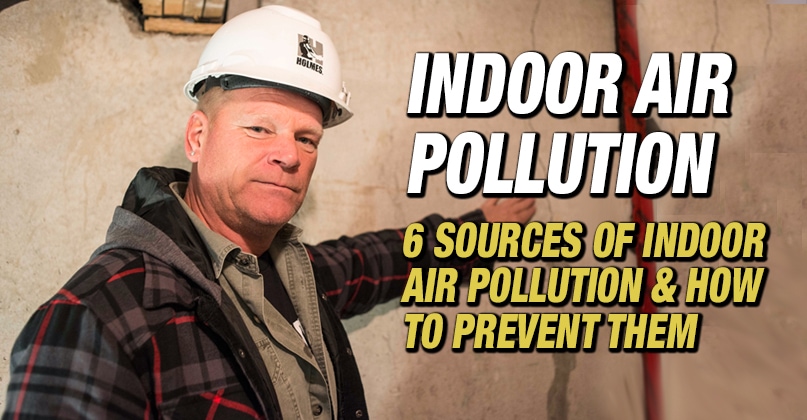I think custom kitchen cabinets are a great investment—but only if you do it right, the first time. Whether you’re renovating your forever home or boosting your home’s resale value,...
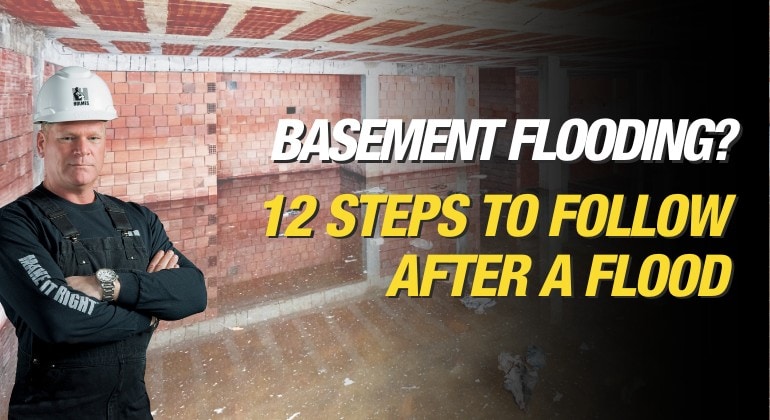
12 Steps After A Flood
By Mike Holmes
Mike’s Advice / Home Safety & Maintenance
Tuesday, July 25th, 2023 @ 9:00am
What To Do After A Flood In My Home?
There are many reasons why your house might flood: Heavy rains, spring run-off from a rapid snow melt, a sewage back up, a broken pipe or even an appliance overflowing. The amount of water could be minimal and confined to a small area, or it could be several inches deep covering your entire basement. Either way, the potential for damage is the same and you need to take it seriously.
How might a flood damage my home?
Most homeowners are worried about getting their house back to looking good. They think more about redecorating the space than restoring damage. But it’s not just a matter of cleaning up the water, re-painting and replacing some carpet. Your first priority should be to make sure that your home is safe.
Water damage creates the perfect environment for mould and poor indoor air quality, causing hay fever-type symptoms, such as sneezing, runny nose, red eyes and skin rashes. If your post-flood restoration isn’t done properly the contamination from bacteria or mould caused by water damage can affect your family’s health, not to mention your home’s structure.
Sump Pumps and Basement Flooding
A sump pump is a small device with a pretty big job – to pump water away from your home. It will take any excessive below-grade water and help pump it away from your foundation. Get one for your basement if you don’t have one.
RELATED: Should My Basement Have A Sump Pump?
What to Do in the First 24 Hours After a Flood
- Check for signs of visible structural damage BEFORE entering your home. This includes warping, loosened or cracked foundation.
- Call your local electric utility immediately if the water has risen above outlets, baseboard heaters or your furnace, covers power cords, or is near the electrical panel
- Turn off all water and electrical sources within the home
- Do not try to electrical appliances if they have been in contact with flood water
- Do not enter your basement if the water is above the level of electrical outlets, baseboard heaters or furnace, or is near your electrical panel
Do not step in puddles or standing water if power lines are down outside your home.
It’s important to act quickly, because this will help stop further saturation, damage and mould spores from growing.
Steps To Take After A Flood
1. Call Your Insurance Company Right Away After A Flood
Your first call should be to your insurance company. In most cases, if the flood damage isn’t reported within the first 24 hours it won’t be covered. Most home insurance policies in Canada don’t cover damage caused by overland flooding – that’s water that comes in through windows and/or doors. But they do cover water damage caused by backed up sewer pipes or water seeping in through the basement.
2. Hire A Clean Up Company
Any water in your home needs to be pumped out. All debris and anything that’s been saturated must be removed. If there is sewage waste it requires extra precautions and professional help. Call a professional who specializes in clean ups after flooding.
3. Find A Contractor
You will need one with plenty of experience restoring water-damaged homes. Ask the question – don’t assume every contractor will know what to do. Then do your regular background and reference checks. Contact past clients – not just 3, but as many as possible – and ask about the quality of their work.
If my house was flooded, can I attempt to get rid of the water?
I don’t recommend dealing with a flood yourself. This is not an easy task, and there are many steps you need to take to ensure you don’t have extensive water damage. Concrete is a porous material, so your interior foundation walls must be cleaned, sanitized and dried.
4. Hire A Licensed Electrical Contractor
This is crucial, especially if water rose as high as your electrical panel, outlets and/or switches, or if it got into fixtures and/or appliances. For safety’s sake, you must have your electrical checked by a licensed electrical contractor before turning the power back on.
Note these important electrical safety tips from the Electrical Safety Authority:
- Do not enter your basement if the water is above the level of electrical outlets, baseboard heaters or furnace, or is near your electrical panel;
- Call your local electric utility immediately if the water has risen above outlets, baseboard heaters or your furnace, covers power cords, or is near the electrical panel, . Arrange for them to disconnect power to your home; and
- Watch out for downed powerlines in flood-affected areas. If you see one, stay back the length of a school bus (10 metres). Call 9-1-1 and your local electric utility to report it.
In the province of Ontario, you can find a Licensed Electrical Contractor in your area here.
5. Hire An HVAC Specialist After A Flood
Your heating and cooling system could have been damaged by flood waters, so have it checked by an HVAC specialist, especially if you suspect that water got into heat registers and/or ducts.
6. Replace Flooring After a Flood
All damaged flooring (including laminate, hardwood, carpeting and tiling) should be ripped out. Same goes for your subfloor. Why?
Laminate and hardwood floors will absorb water, swell and warp, including their subfloor. All water-damaged carpeting must be removed along with the underpad, especially if there is any natural fibre in it. If the carpet is made of synthetic material it can’t serve as a food source for mould, but the subfloor is going to be wood or OSB (oriented strand board, which is a composite wood product) and it’s likely that it will be soaked through.
Even if you have tile, which doesn’t absorb water, the wood substrate will never completely dry out with tile over top of it. Any wet wood or OSB will lead to mold. Get rid of it.
You should remove your baseboard trims as well.

The amount of water could be minimal and confined to a small area, or it could be several inches deep covering your entire basement. The potential for damage is the same and you need to take it seriously.
7. Open Up Your Walls
Most walls are made of wood studs and drywall. Both will grow mold if there’s moisture. Your contractor will need to open up your walls so the studs can dry out.
It is very important that air circulates into the wall cavities to dry out the areas.
8. Remove Drywall After a Flood
As a bare minimum your contractor should remove at least 1 foot of drywall above the water line, all the way down to the floor. The more the better. If they don’t, you may get mold and mildew.
When drywall gets too wet, it can become discolored and start to bubble. With wet drywall, you will likely have black mold and structural damage. Mold spores in your drywall can be toxic to those in the room who breathe in the air.
9. Remove Insulation
Saturated insulation bats aren’t effective because they compress and the air space gets full of water. Plus, the insulation will never completely dry out, which will keep moisture in your walls forever. That can lead to poor air quality, mould and mildew and further damage to your home’s structure from rot.
10. Let The Wall Cavity Dry Out
After your contractor has removed all the drywall and insulation, leave it open so that the wall cavity can dry out completely. This can take weeks. A wood stud that’s dry to the touch can still be wet in the middle. Your contractor should be using a moisture meter to know if the percentage of moisture is safe to start rebuilding.
11. Get An Indoor Air Quality Test
Way too many families don’t do an air test inside their home. After a flood, you must test the air quality of your home to confirm it matches outdoor conditions. If not, get out.
RELATED: How To Improve Your Indoor Air Quality
12. Tear Out The Basement
Depending on the amount of damage, your best bet might be to tear out the entire basement, right down to the foundation walls and start over. That way it can be rebuilt the right way using mould-resistant drywall and insulation products that also help create a proper thermal break.
Don’t force open doors. While it may be swollen from water, the door might also be providing support to the rest of the structure.
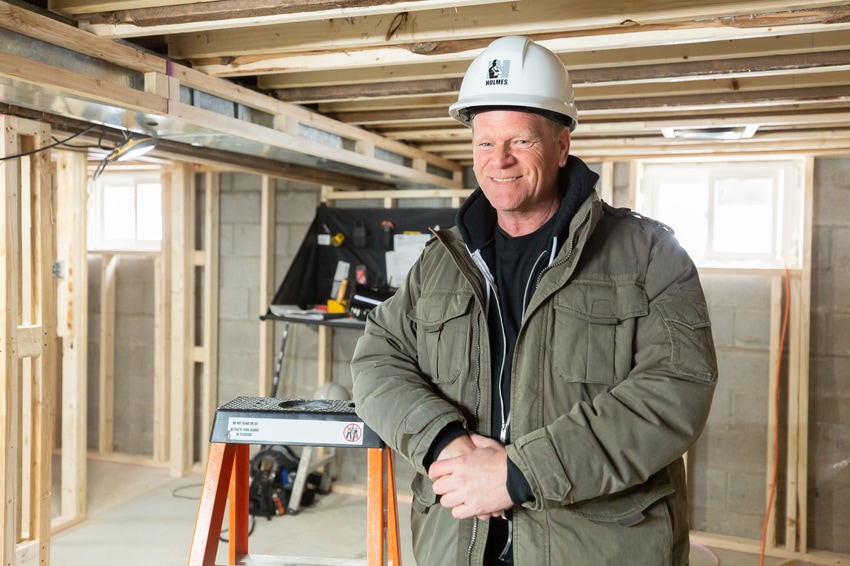
Mike Holmes in the basement of the Young family hom in HGTV’s Holmes Family Rescue
READ NEXT:
How To Protect Your Home Against Flooding
What To Do if My Basement Floods?


